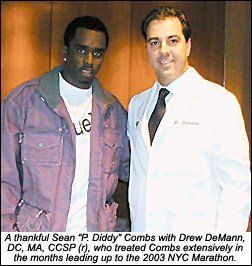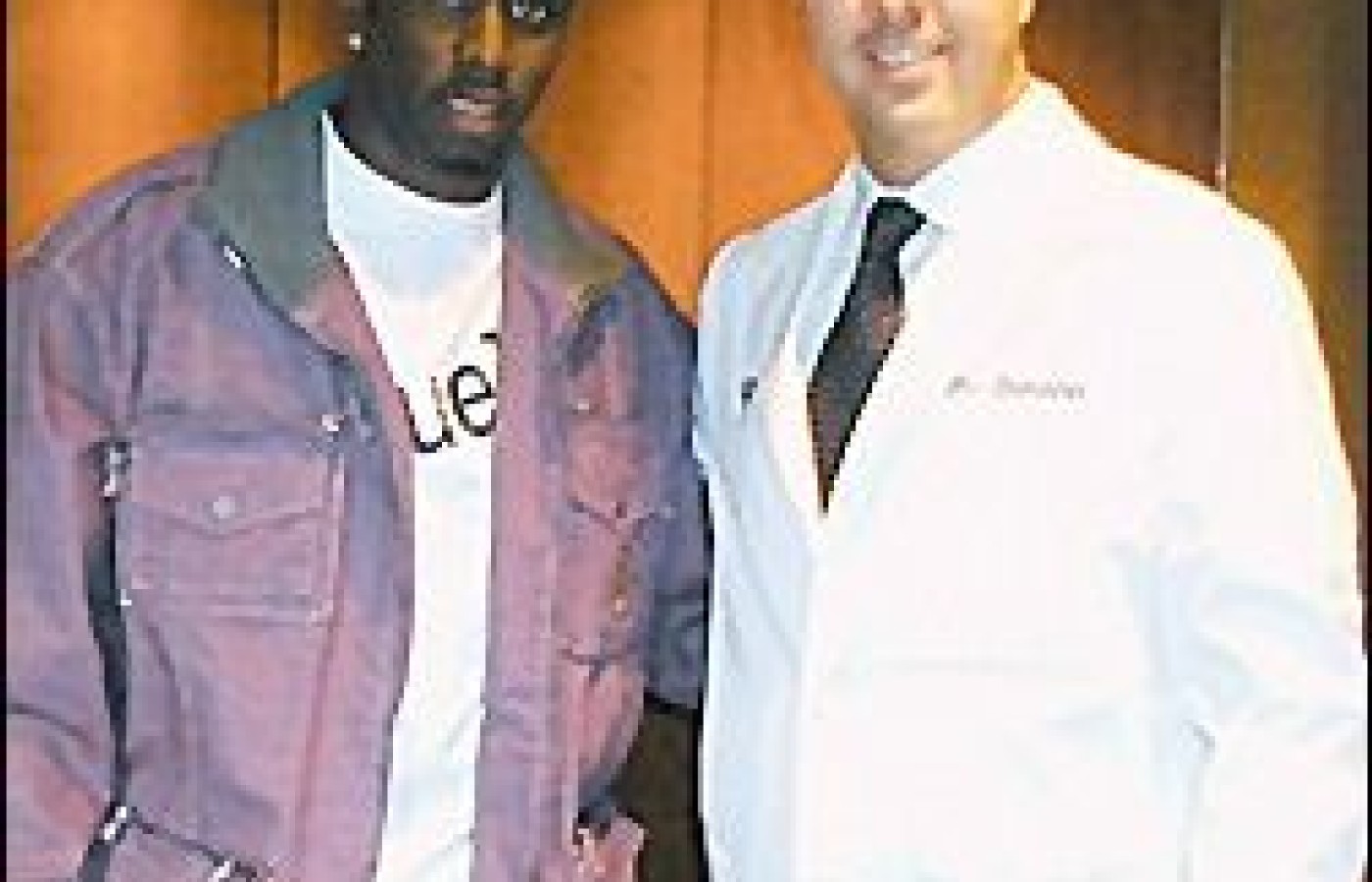You became a chiropractor to serve people, not an insurance company. You deserve to run a business that aligns with your values, supports your family and lights you up. Cash-based care isn’t just a pricing model – it’s a philosophy rooted in freedom, trust and respect for your patients and for yourself. Here's why - and how - to do it.
"P. Diddy" Runs NYC Marathon, Raises $2 Million, Thanks Chiropractic

The first official New York City Marathon was held 34 years ago, one year before rap music mogul Sean "Puffy" Combs was born. On Nov. 2, 2003, Combs, a.k.a. "P-Diddy" or "Puff Daddy," kept a promise to himself and NYC schoolchildren by completing the 26.2 course through Manhattan in four hours, 14 minutes and 54 seconds.
Combs was determined to run the race on his 33rd birthday, and vowed to raise $1 million for children in doing so. By all accounts, "Diddy Runs the City" raised twice that amount. Among those donating funds to the cause were Bruce Willis, Ben Affleck and Jennifer Lopez, Oprah Winfrey, and New York Mayor Michael R. Bloomberg.
Charity is not new to Combs: He founded Daddy's House in 1995 to provide academic tutoring to youths; however, as this was his first marathon (and one he didn't decide to train for until late August), he realized quickly he needed the assistance of a health care professional.
Enter Drew DeMann, DC, MA, CCSP, whom Combs called his "personal sports physician." Dr. DeMann, who directs Manhattan Spine & Sports Therapy and has treated several New York sports figures and entertainers, provided chiropractic care to Combs in the weeks leading up to the marathon.
"Mr. Combs decided to run the NYC Marathon only two months before the event," said Dr. DeMann. "He had a number of physical ailments prior to the race and used chiropractic extensively to prepare for the race. This included treatment of his back, neck and knees."
"We decided to take an aggressive approach to treating and combating muscle fatigue so that he could continue his rigorous training sessions," noted Dr. Demann. "The combination of chiropractic joint manipulation and vertebral axial decompression therapy has kept Sean on his feet and on course for completing the marathon."
In addition to psychological barriers and fatigue, most new marathon runners are up against a "wall" of joint stiffness and lower back pain. "It's no secret that P. Diddy is not a runner and could barely make it through two miles his first time hitting pavement," Dr. DeMann pointed out. With Combs' aggressive training needs and enthusiasm for the sport, however, Dr. DeMann designed a course of manipulation and traction treatment to facilitate running and make it less likely to injure him.
"It is obvious that Mr. Combs had access to the best that health care had to offer him. He was kind enough to mention my name and chiropractic several times prior to the event, and to bring me to the forefront of the press conferences following it, to pay special thanks to me and chiropractic for getting him through a very difficult race."
After the race, Dr. DeMann admitted that Combs was experiencing tendonitis in his right knee and was "hurting right now." However, he added, "If it was anybody else who was running, they probably would have quit midway through - or not have done it in the first place." Combs finished the 26.2-mile course in 11,359th place. (35,100 runners participated in the 2003 race.)
Although he responded to questions about running the 2004 marathon with "No, no, no," Combs told reporters after the race, "Never in my life have I ever experienced anything as crazy as this. It was a beautiful experience."
The funds raised from "Diddy Runs the City" will go to NYC's public school system, the Children's Hope Foundation, which helps children with HIV/AIDS, and Daddy's House.
Jim Harrison, associated editor



